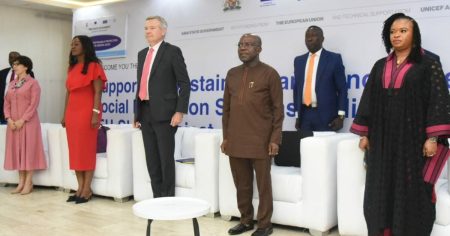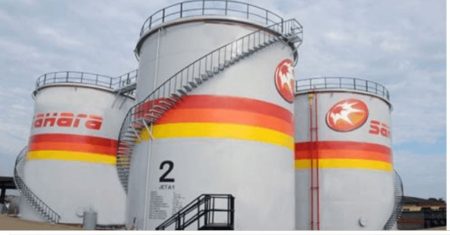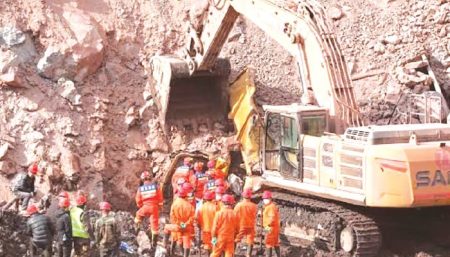The proposed N712 billion renovation of the Murtala Muhammed International Airport (MMIA) in Lagos has ignited a firestorm of public debate in Nigeria. Despite repeated attempts by Aviation Minister Festus Keyamo to justify the cost, many Nigerians remain skeptical, questioning the necessity and budgetary appropriateness of such a substantial investment. The Federal Airports Authority of Nigeria (FAAN), seeking to quell the controversy, has stepped forward to outline the project’s scope and phased implementation plan, emphasizing the long-term benefits of modernizing Nigeria’s premier airport.
FAAN has articulated a six-phase plan designed to transform MMIA into a world-class aviation hub, enhancing passenger experience and elevating its status within West Africa. The initial phase will concentrate on comprehensively refurbishing Terminal 1, the airport’s busiest facility. This entails modernizing the terminal’s exterior, upgrading interior finishes, and overhauling critical systems such as plumbing, electrical, and mechanical infrastructure. The goal is to bring Terminal 1 up to par with international standards in terms of both aesthetics and functionality.
Subsequent phases will address other critical areas of the airport. Terminal 2 will be expanded to accommodate larger aircraft, including extensions to the apron and finger areas. Existing hangars within the expansion zone will be relocated to optimize space and operational efficiency. A redesigned road network will aim to alleviate traffic congestion and improve access to the airport, facilitating smoother passenger and staff movement. A connection building and skywalk will integrate Terminal 1 and Terminal 2, along with the multi-level car park, streamlining passenger flow and enhancing operational synergy. To minimize disruption during construction, a temporary departure hall will be established, ensuring continued service and passenger comfort. Finally, the central square facing the terminals will undergo a landscape redesign, creating a more welcoming and aesthetically pleasing arrival experience for visitors.
The Ministry of Aviation and Aerospace Development has defended the project’s cost, highlighting the urgent need to modernize the aging airport, originally built in 1979 and designed for a significantly smaller passenger volume. They argue that the renovation is essential to meet the demands of the current passenger traffic, which now exceeds eight million annually, and to address issues like outdated infrastructure, frequent system breakdowns, and inadequate facilities. The Ministry points to the dilapidated state of the existing terminal, emphasizing that the renovation goes beyond cosmetic upgrades, encompassing a complete structural overhaul, including modern baggage systems, smart security technology, fire safety improvements, energy-efficient designs, enhanced ICT infrastructure, new aerobridges, and integration with multi-modal transport systems.
Furthermore, the Ministry provides a comparative analysis of similar airport projects in other African countries, such as Ethiopia, Angola, and Rwanda, to contextualize the N712 billion budget. They argue that this cost, approximately $475 million at an exchange rate of N1500 to $1, is within the range of international standards for such large-scale airport renovations. The Ministry also emphasizes that the funding for the project will be sourced from the Renewed Hope Infrastructure Development Fund, derived from fuel subsidy removal proceeds, and not through borrowing.
The Ministry’s spokesperson, Tunde Moshood, has criticized the public backlash, characterizing it as uninformed and driven by cynicism rather than constructive engagement. He calls for a more informed and balanced approach to evaluating the project, urging Nigerians to consider the long-term benefits of a modernized airport for the country’s economy and international image. He contends that the renovated MMIA will not only enhance passenger experience but also serve as a symbol of national pride and a gateway for investment and tourism. He emphasizes the need to move beyond superficial critiques and appreciate the comprehensive nature of the renovation, which aims to address fundamental infrastructure challenges and position Nigeria as a leading player in the aviation industry.
Moshood further defends Minister Keyamo’s leadership, highlighting his reform-minded approach and achievements in the aviation sector. He emphasizes the Minister’s legal expertise, which has reportedly saved the country millions in consultancy fees and facilitated the swift execution of complex aviation agreements. He dismisses criticisms based on Keyamo’s lack of technical aviation background, arguing that leadership is about vision, coordination, and strategic thinking, not necessarily specialized technical knowledge. Moshood calls for a shift in public discourse, urging Nigerians to replace cynicism with constructive criticism and engage in a more informed and productive dialogue about the project’s merits and potential impact on the nation’s aviation future. He underscores the importance of MMIA as Nigeria’s economic and diplomatic gateway, stressing that the renovation is not just about an old building but about transforming the narrative of Nigerian aviation.














